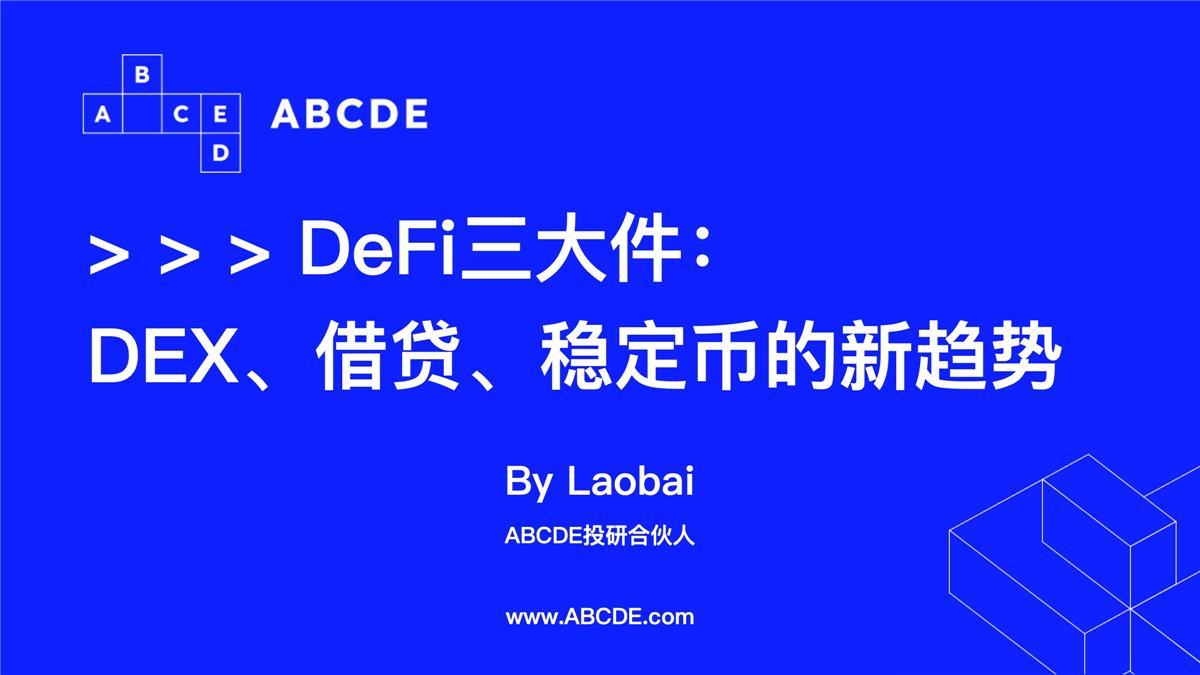UK government issues document: How is DeFi staking and lending taxed?
Original Title: The taxation of decentralised finance (DeFi) involving the lending and staking of cryptoassets
Source: GOV.UK
Compiled by: TaxDAO
The financial services sector has seen rapid development in recent years, including the growth of cryptoassets (digital representations of value or contractual rights that can be used for financial transactions and may play an increasingly important role in financial innovation). New forms of cryptoassets and the services supported by them are continuously evolving.
In March 2018, the then Chancellor of the Exchequer launched the government's FinTech industry strategy. It outlined the government's ambition to work with the UK financial services sector to maintain the UK's position as a global leading financial center and one of the most innovative economies in the world.
The government aims to establish a clear tax and regulatory framework for cryptoassets, positioning the UK at the forefront of safe, sustainable, and rapid innovation in cryptoassets and blockchain technology.
The Chancellor reaffirmed the commitment to maintaining the UK's global leadership in the FinTech sector at TheCityUK national conference held in Edinburgh in December 2022.
One of the measures announced last April was to explore and address specific issues related to the taxation of DeFi lending and staking activities. Some stakeholders highlighted inconsistencies between the current capital gains tax (CGT) rules and the substance of activities when applied to DeFi.
As part of the review of the tax rules applicable to DeFi transactions, the government issued a call for evidence from July 5 to August 31, 2022. Most respondents believed that changing the tax rules would benefit the industry and users.
Recent market events—including the failure of FTX—have highlighted the vulnerabilities within the entire cryptoasset industry. In the decentralized financial system, policymakers and regulators have also emphasized specific risks, including cyber risks and other technological risks, as well as the increasing interdependence between traditional financial systems and decentralized financial systems, and the lack of support during periods of market stress.
The tax policy approach to DeFi lending and staking proposed in this document has considered neutrality, fairness, and practicality. It is not intended to replace the broader regulatory framework for cryptoassets. For more details on the government's approach to regulating cryptoassets, please refer to the UK Treasury's publication on February 1, 2023, titled "Regulatory Framework for Cryptoassets in Future Financial Services—Consultation and Call for Evidence."
What are DeFi lending and staking?
DeFi is an umbrella term used to describe services that provide traditional financial services using distributed ledger technology. DeFi is typically executed through "smart contracts," which are a set of coded rules that execute transactions on the blockchain when certain parameters are met. As a result, DeFi can provide financial services without the use of traditional financial intermediaries.
DeFi lending services allow users to deposit tokens and receive financial returns in exchange, commonly referred to as interest (although for tax purposes, it is not considered interest). Additionally, holders of cryptoassets (referred to as liquidity providers in this context) can provide their tokens to a platform, pooling them with tokens from other users (a "liquidity pool"). This method of providing liquidity to the platform is known as "staking," and it allows the platform to use the pooled tokens to execute other DeFi services. To encourage cryptoasset owners to provide this liquidity to the platform, they will receive financial returns, typically paid periodically during the protocol term or at the end of the term ("DeFi returns").
Policy Principles
The government is consulting on the implementation of a tax scheme for DeFi lending and staking, aiming to disregard any disposals of beneficial ownership that occur when cryptoassets are staked or lent out for CGT purposes. Instead, capital gains tax will apply when cryptoassets are disposed of economically (e.g., when sold directly or used to exchange goods and services).
The DeFi transactions intended to be covered primarily involve those where participants retain the economic interest in the lent or staked tokens during the transaction, despite any legal or beneficial ownership transfer. This occurs when participants transfer cryptoassets to another party (the borrower) for a period and have the legal right to reclaim an equivalent amount of cryptoassets at some future point. If participants benefit from changes in the value of the tokens during the loan or staking period, they will retain the economic interest in the lent or staked tokens.
In certain cases, during the staking or lending period, participants may sell their rights in the equity tokens to another party. These rights are typically represented by liquidity tokens issued by the platform. The new regulations will treat the disposal of rights to staked or lent tokens as a disposal of the relevant tokens. When the rights are disposed of, capital gains tax will apply as if the user had sold the staked or lent tokens.
The staking or lending of liquidity tokens or other tokens representing rights to staked or lent tokens will not be considered a disposal.
Under these proposals, the buyer of the rights to stake or lend tokens will be regarded as having acquired the staked or lent tokens. This means that when these rights are exercised and the staked or lent tokens are withdrawn, no capital gains tax will arise. For example, when a buyer of liquidity tokens uses them to reclaim cryptoassets originally held by another user, no capital gains tax will be incurred.
When tokens are lent or staked, DeFi returns will accumulate gradually during the transaction. If participants sell their rights in the staked tokens during the transaction, a portion of the DeFi returns generated before the sale will typically be sold along with the rights to the staked or lent tokens. The original owner is considered to have realized the accumulated DeFi returns up to the point of sale.
Proposed Scope of Rules
According to the principles outlined above, a transaction is expected to fall within the regulations if it includes the following elements:
a) Cryptoassets are initially transferred from one party (the lender) to another (the borrower), and/or cryptoassets are transferred through the use of smart contracts;
b) The borrower is obligated to return the borrowed tokens to the lender, and/or the smart contract allows the lender to withdraw tokens;
c) Tokens can be automatically returned at the lender's urging, the borrower's request, or at the end of a predetermined period;
d) The lender has the right to reclaim at least the same quantity of tokens of the same type as those initially lent or staked.
Application of the Rules
a) For both the lender and the borrower, the transaction will not incur capital gains tax;
b) Any sale of rights related to the lent or staked tokens will be treated as a disposal of the tokens associated with those rights;
c) Any DeFi returns accumulated on the tokens prior to the sale of such rights should be taxed by the lender at the time the rights are disposed of;
d) The buyer of the rights to lend or stake tokens is regarded as having acquired the lent or staked tokens;
e) If the borrower fails to return the borrowed tokens, the lender will be considered to have disposed of the staked or lent tokens. This will occur when the borrower loses the ability to return the tokens.
Proposed Design of the New Tax Framework
Lending or staking arrangements typically have three phases:
· Transfer of tokens to another party
· Duration of the loan/equity
· Return of lent/staked tokens
The first phase of a lending or staking arrangement involves the original owner (the lender) transferring cryptoassets to another party (the borrower/liquidity pool) or providing tokens as liquidity through a smart contract. The borrower is obligated to return the same quantity of the same type of tokens upon request or at the end of a predetermined period. In some cases, the lender may receive another cryptoasset representing their rights to the original cryptoassets.
Under the proposed approach, any transfer of beneficial ownership of cryptoassets from the lender to the borrower will not be subject to capital gains tax. For tax purposes, any cryptoasset (or any other form of rights) received from the borrower representing the rights to the lent or staked tokens will be treated as the original tokens held by the lender.
The second phase of DeFi lending and staking transactions refers to the duration of the loan/equity. The length of this duration varies, with some arrangements lasting several years.
For most lenders, there will be no anticipated capital gains tax consequences during the second phase (but note that any receipts of DeFi returns should be taxed upon receipt).
However, during this phase, some lenders may sell their rights in the lent or staked cryptoassets. In such cases, the rules will treat the disposal of the rights as a disposal of the relevant cryptoassets at the time the rights are sold.
Additionally, in certain cases, the borrower may not return part or all of the borrowed tokens. In this case, when a default occurs, the proportion of cryptoassets that cannot be returned will be treated as disposed of by the original lender. The consideration is the amount received from the borrower as compensation for the tokens that cannot be returned.
The third phase of DeFi lending or staking transactions is characterized by the lender reclaiming the lent tokens. This occurs either because the lending or staking period has ended or because the participants have exercised their rights to withdraw the lent/staked tokens (e.g., by returning liquidity tokens).
Under the proposed rules, this situation will generally not result in any capital gains tax consequences for the participants.
If the tokens received by the lender are fewer than the tokens originally lent, for example, due to the borrower's bankruptcy, then the proportion of tokens not returned will be treated as disposed of by the lender when the borrower is unable to repay.










